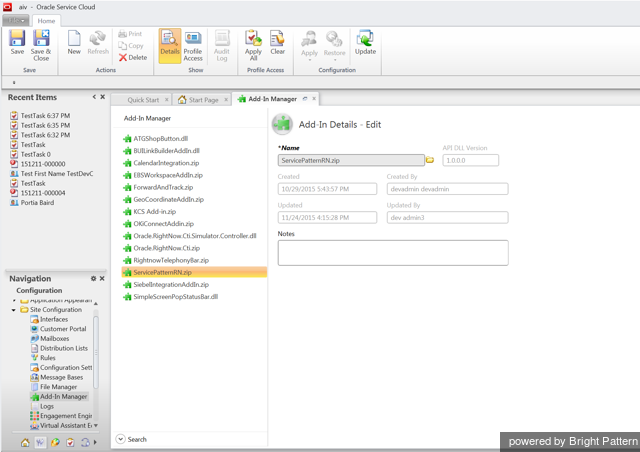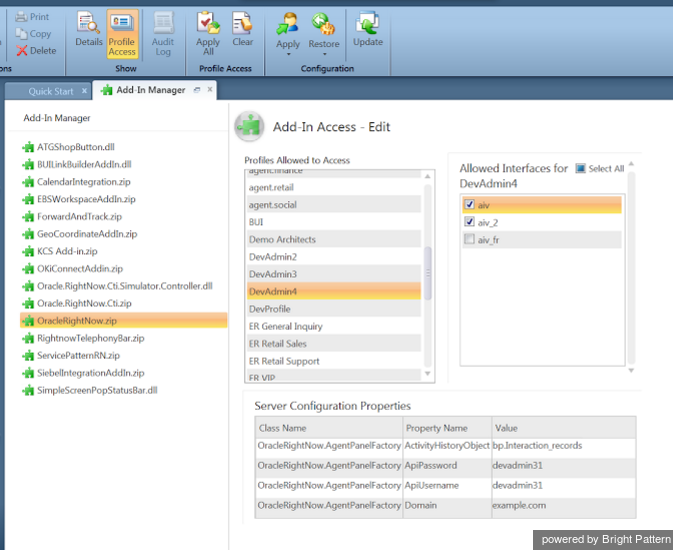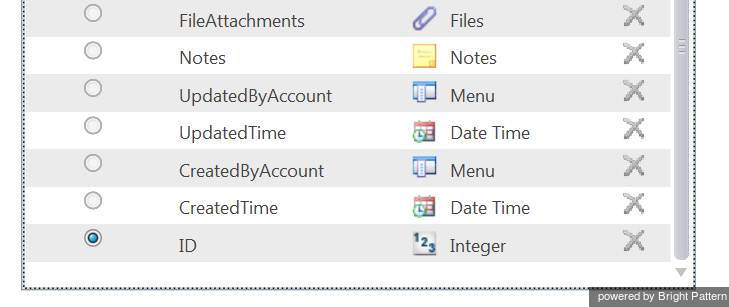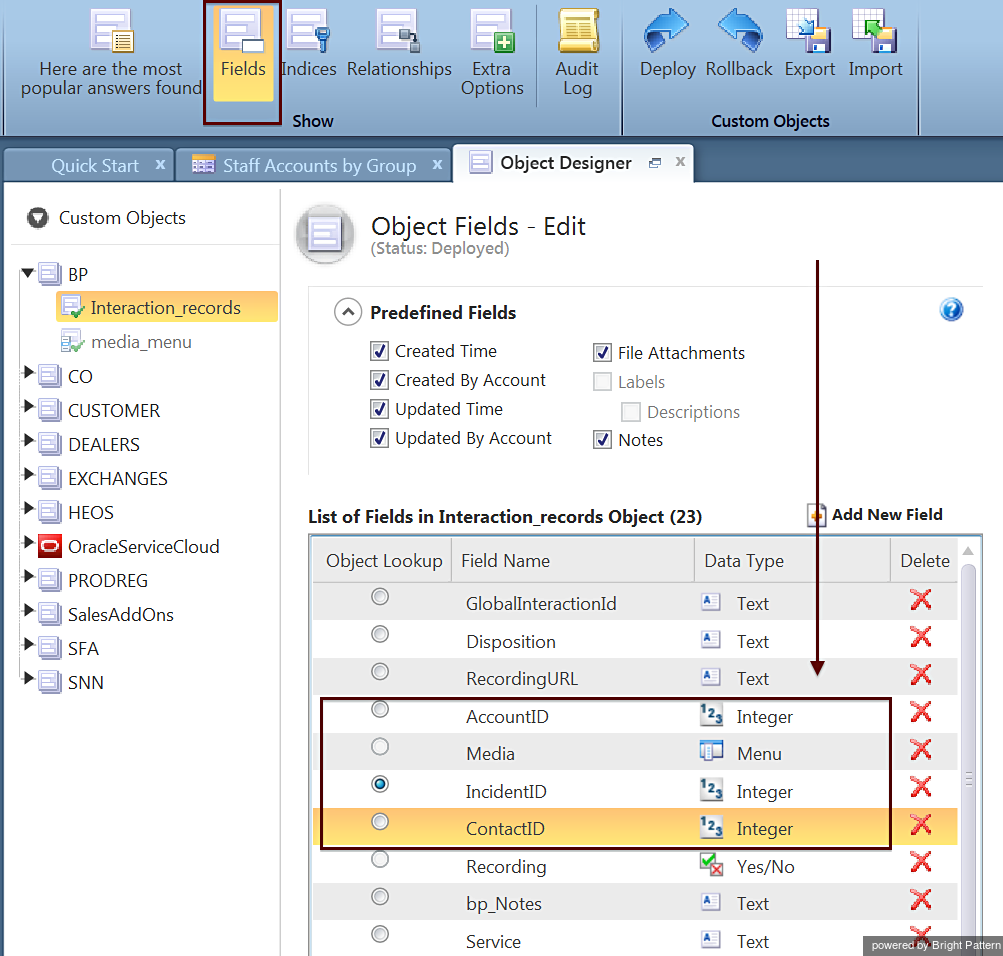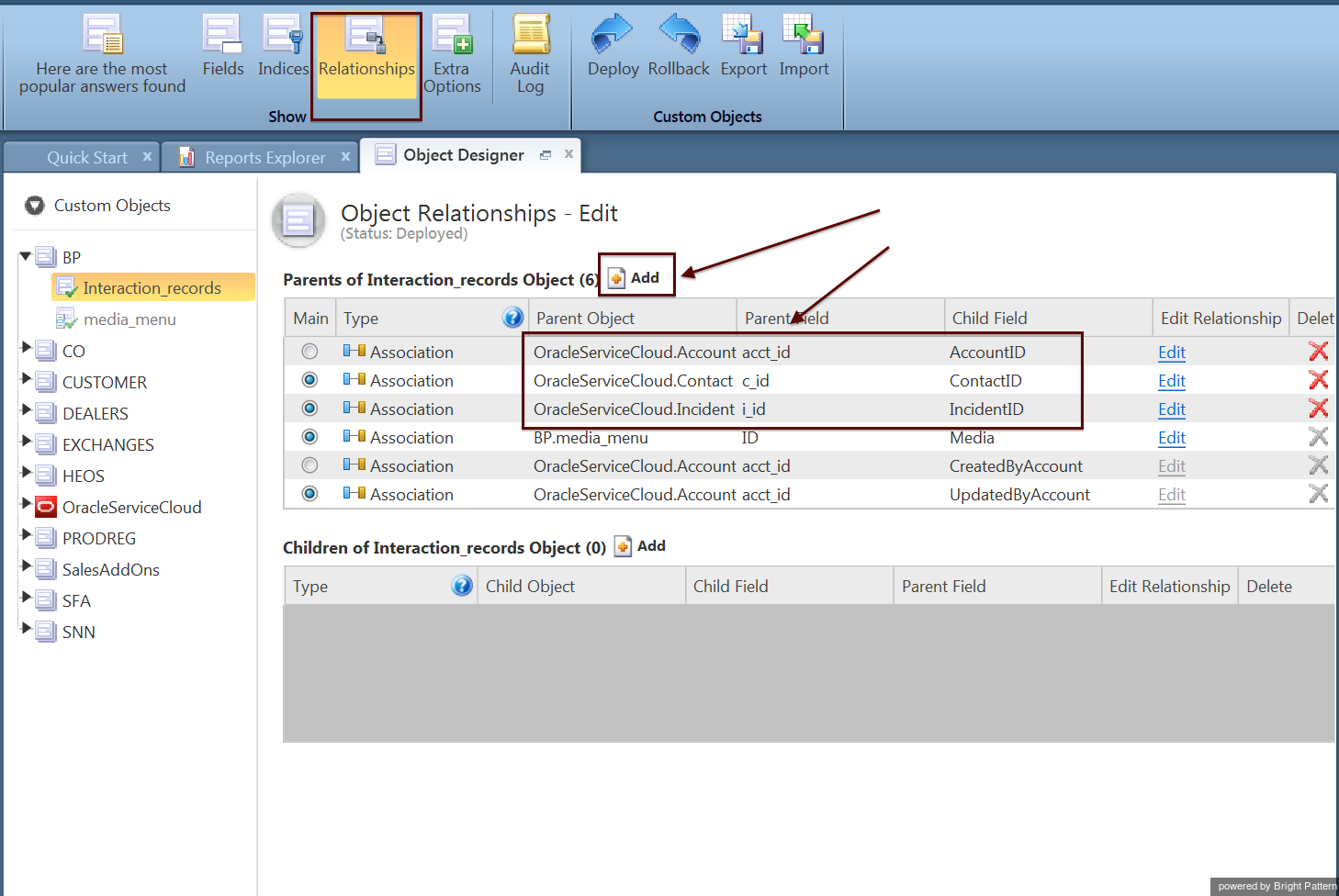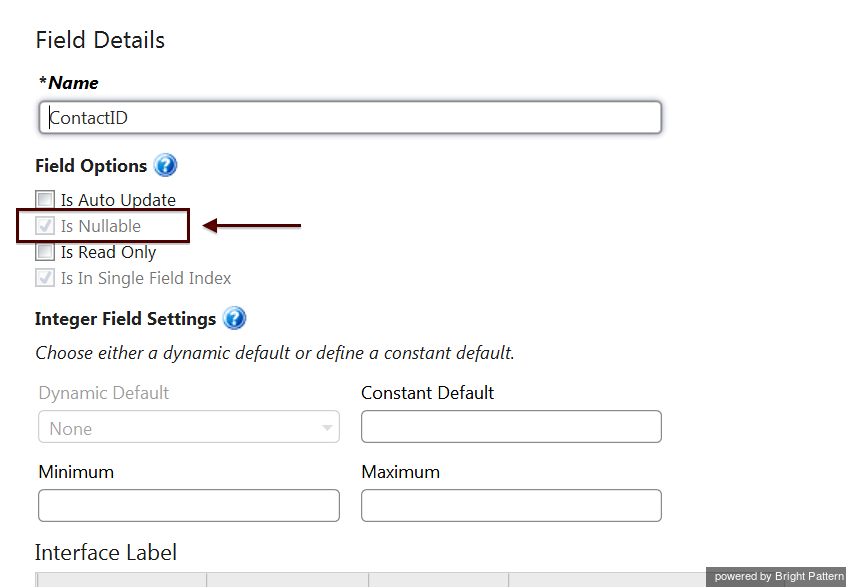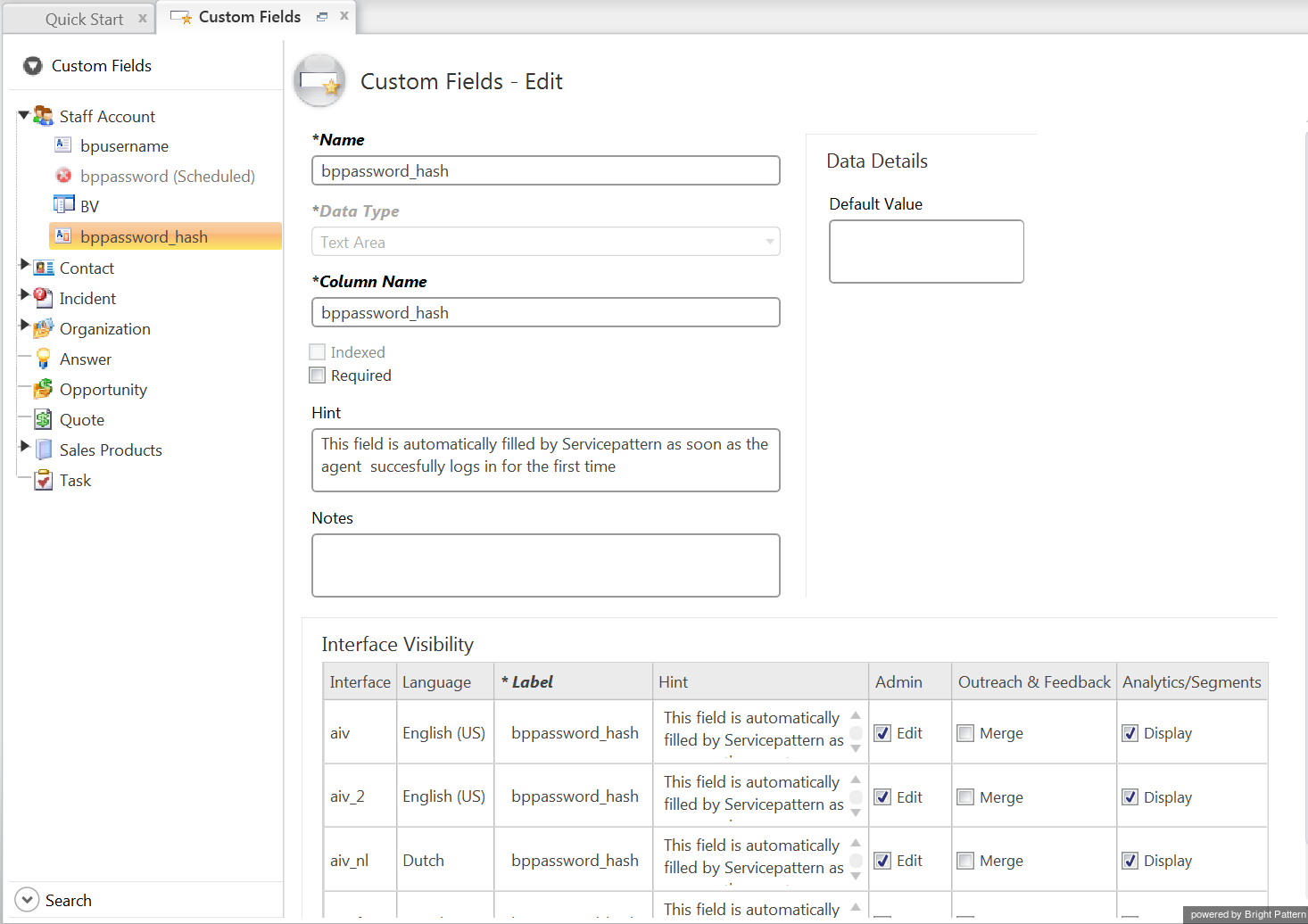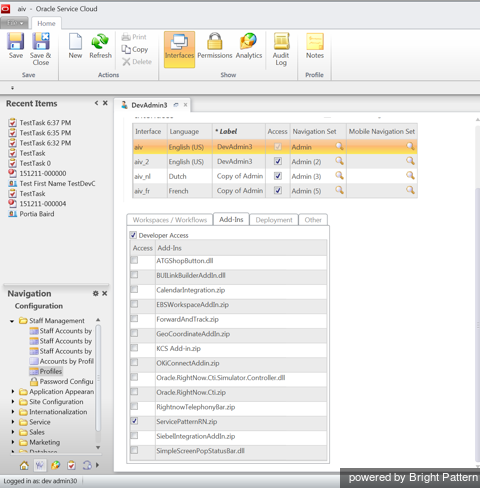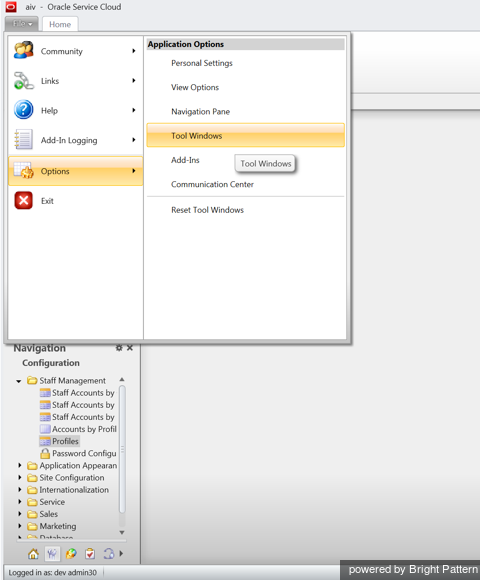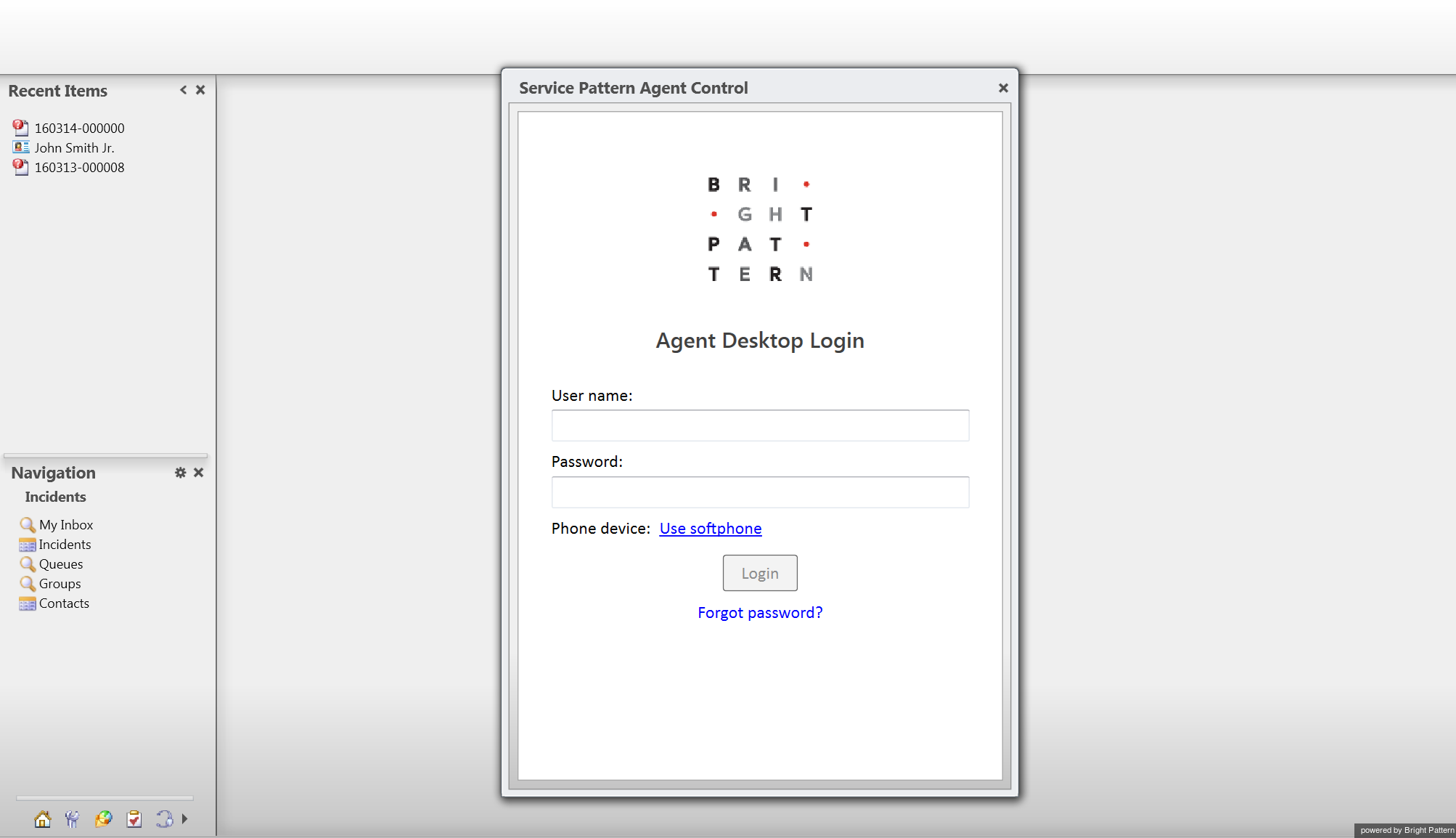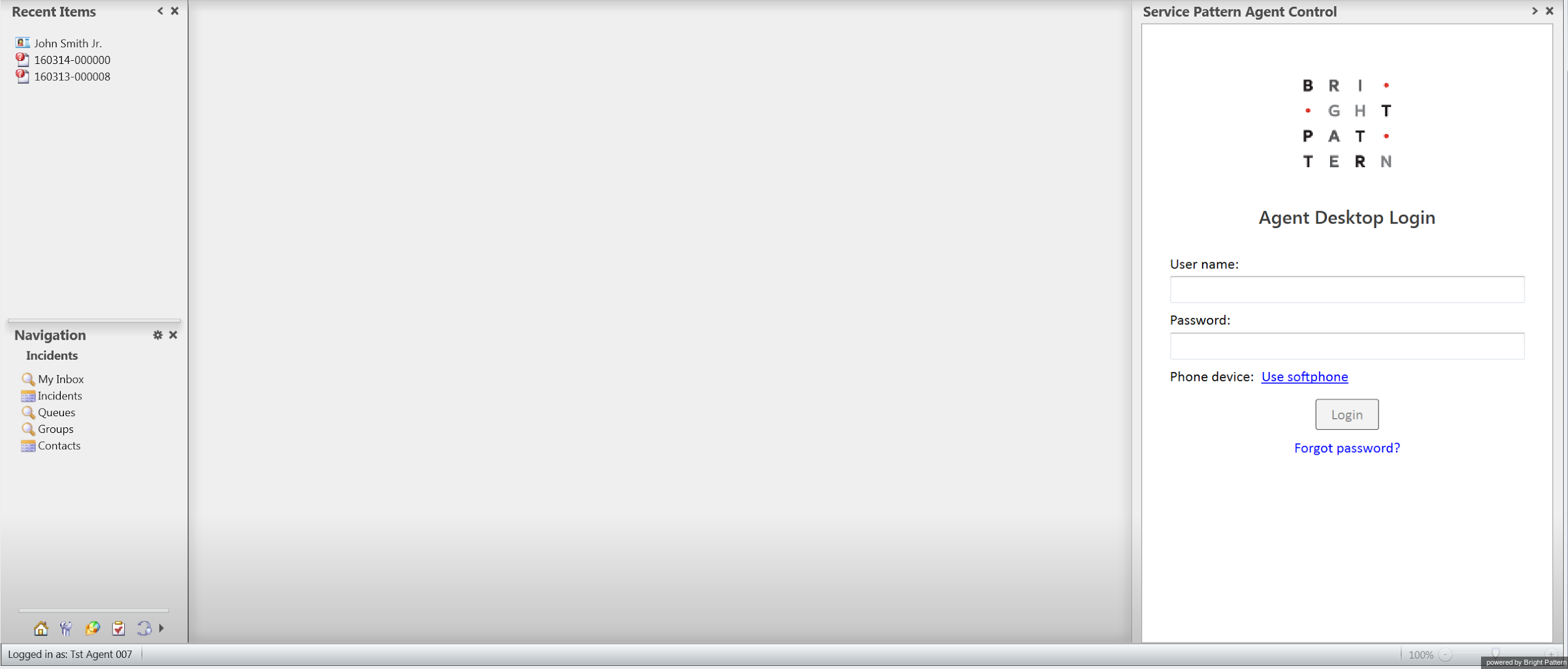Contents
- Introduction
- Configuration
- Features and Usage
RightNow Integration Setup
When the Bright Pattern Contact Center is integrated with RightNow, your Bright Pattern Agent Desktop is essentially embedded into the RightNow environment. From one integrated Agent Desktop interface, you have direct access to RightNow application features such as the phone, live chat, SMS, mobile messenger apps, customer and agent records, interaction details, and more.
How to Set Up the Integrated Agent Desktop
Step 1: Add the RightNow application to your account.
- Submit a request to the vendor for the RightNow Integration package. You will receive a .ZIP file titled OracleRightNow.
- Log into your RightNow application and go to Configuration > Site Configuration > Add-in Manager.
- Click New.
Step 2: Begin application installation.
- Navigate to the location where the OracleRightNow.zip file is stored.
- Select the file and click Open.
- Click Save to confirm add-in deployment.
Step 3: Link your RightNow applications to your Bright Pattern profile.
- Click Profile Access.
- Select one of the profiles that will use the SP integration. Within this profile, select one of the interfaces that will use the SP integration.
For the selected profile/interface combination, define the following parameters:
- ApUsername and ApPassword – These are the credentials of the account that will be used to create activity history objects for processed interactions. This can be any existing account with sufficient permissions to create new objects in the RightNow application.
- Domain – Domain refers to the Bright Pattern tenant access domain name--the domain name assigned to your contact center at the service provider level. If the domain is specified here, users of the integrated desktop will only need to enter their username and password when logging in. Otherwise, each user will have to enter the domain name manually upon first login.
- ActivityHistoryObject – This refers to the name of the custom object that will be used to record activity history for processed interactions. The custom object does not need to exist in RightNow in order to be specified here; it can be created as the next step of this integration procedure (see below). If you do not specify a custom object here, object Task will be used to record activity history.
Note that activity history is a collection of data related to a processed interaction, such as duration, disposition, and recording link. When object Task is used to record activity history, most of these data elements will appear in the general-purpose Notes field of the Task object. The advantage of using a custom object is that it can use a dedicated field for each data element (see below).
Step 4: If necessary, repeat step 3 for other combinations of profiles and interfaces.
Step 5: Define custom objects, if needed.
If you set the ActivityHistoryObject to a custom object in the previous step, open the Object Designer and create a custom object with the same name. Select the Predefined Fields and create custom fields for this object setting their names and types exactly as shown in the screenshot below.
Step 6: Specify data types for the objects.
Note that the ID field name (shown at the bottom of the previous screenshot) has data type Integer. You must specify the the data type.
As such, the following ID fields' data type must also be set to Integer:
- AccountID
- ContactID
- IncidentID
Step 7: Establish relationships for the objects.
Specify the applicable relationships for all of the ID fields (AccountID, ContactID, and IncidentID).
- Navigate to Relationships.
- From the Custom Objects menu (on the left), select the custom object whose relationships you are modifying. The Object Relationships properties and a list of interaction records parents will be shown.
- Click the Add icon
 to specify the associations with accounts, incidents, and contacts by ID field type.
to specify the associations with accounts, incidents, and contacts by ID field type. - Click Apply to save your changes.
Step 8: Make sure fields are nullable.
Navigate back to Fields. If the attribute is enabled, the Field Options for all field names should be nullable.
How to make the fields nullable:
- Select the desired Field Name from the list of fields. The field properties will be shown on the Field Details panel.
- Under Field Options, check the box for Is Nullable.
- Click Apply to save your changes.
After you have deployed the modified custom object, you should log out and log in to the RightNow application.
Step 9: Define where the activity history records will go.
If you defined a custom object for activity history, use the RightNow Workspace Designer to create a new tab for objects Incident and Contact, where the associated activity history records will appear.
Step 10: Turn on Single-Sign-On functionality.
Note that this step is only necessary if you are planning to implement Single Sign-On (i.e., simultaneous logging in of users into both RightNow and Bright Pattern Contact Center environments.)
Single Sign-On works in the following way: When a user logs into the integrated environment for the first time, the user will log into the RightNow application first and will then be presented with the Bright Pattern Contact Center Agent Desktop Login screen. Upon successful login, the user's Bright Pattern Contact Center username and password will be remembered in the RightNow application, so that the next time this user logs into RightNow, the user will be automatically logged into the Bright Pattern Contact Center Agent Desktop as well. Note that the user may have to re-supply login credentials from time to time in case the Bright Pattern password is set to expire according to the security practices of your contact center.
To support Single Sign-On, follow these steps:
- Navigate to Configuration > Database > Custom Fields.
- Select Staff Account.
- Create these custom fields:
- bpusername field of the Text Field type.
- bppassword_hash field of the Text Area type.
Step 11: Enable users to use the integrated Agent Desktop.
- Go to Staff Management > Profiles.
- Select the profile of the users who will be using the integrated desktop in your organization (e.g., agents).
- Open this profile and click the Add-ins tab.
- Select the ServicePattern Add-in checkbox. Save the configuration changes. This enables the integrated desktop for users with the selected profile. If necessary, repeat the procedure for other profiles. Log out of the RightNow application.
Step 12: Log in with your Bright Pattern Contact Center credentials.
- Log into the RightNow application again. Make sure you log in with one of the profiles for which the integrated desktop was enabled during the previous step.
- Go to File > Options > Tool Windows.
- Select ServicePattern Agent Control and click OK.
- The Agent Desktop login window will open. Drag this window to the right part of your RightNow desktop--it will become a widget within the RightNow application.
This step has to be repeated on computers of all other RightNow users who need access to the integrated desktop.
Step 13: Authenticate your newly integrated account.
- Enter your Bright Pattern credentials.
If you configured the Domain property in step 3, you will only have to enter your username and password on the login screen. Otherwise, you will also see and have to specify the Domain field for your initial login. Use the domain name assigned to your contact center at the service provider level.
By default, you log in with a softphone. To choose another device, click the current 'Phone device setting and select the desired type of device from the menu that appears. For more information about the available device options, see section Selecting a Phone Device of the Agent Guide.
Step 14: Log in and complete Agent Desktop installation.
- Click the Login button.
Note that if this is your first login into the Bright Pattern Contact Center on the given computer, you will be prompted to install the Agent Desktop Helper Application.
The Bright Pattern Contact Center Agent Desktop widget will now show a standard set of tabs and controls available to a contact center agent. For more information about the Agent Desktop tabs and controls see the Agent Guide. Note that the appearance and location of these controls has been modified to match the overall look and feel of the RightNow application.

